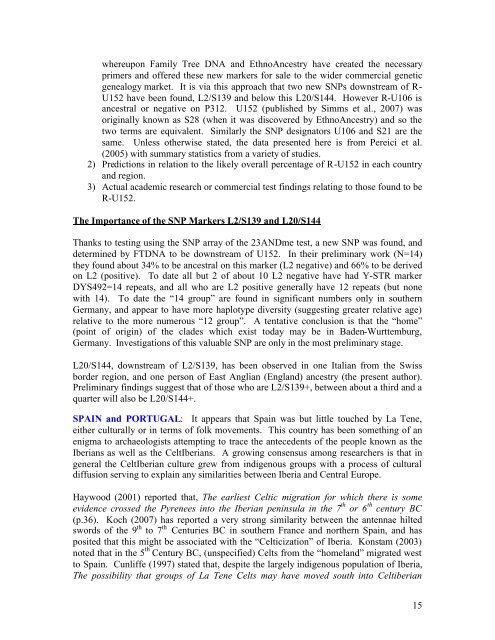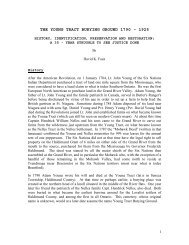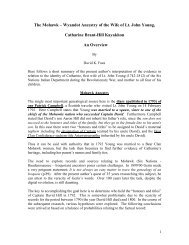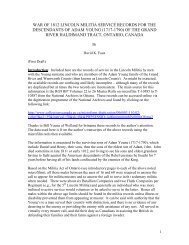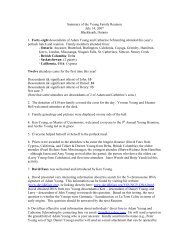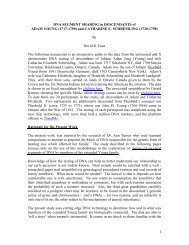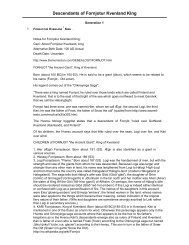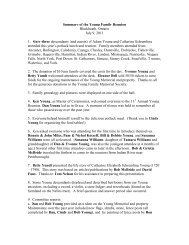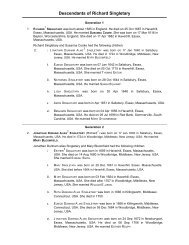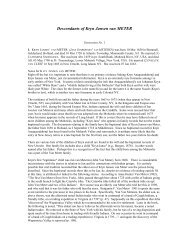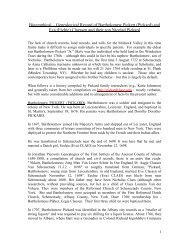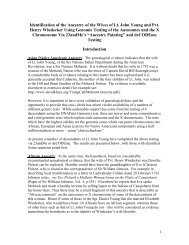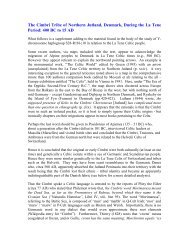Part 2 - Davidkfaux.org
Part 2 - Davidkfaux.org
Part 2 - Davidkfaux.org
You also want an ePaper? Increase the reach of your titles
YUMPU automatically turns print PDFs into web optimized ePapers that Google loves.
whereupon Family Tree DNA and EthnoAncestry have created the necessaryprimers and offered these new markers for sale to the wider commercial geneticgenealogy market. It is via this approach that two new SNPs downstream of R-U152 have been found, L2/S139 and below this L20/S144. However R-U106 isancestral or negative on P312. U152 (published by Simms et al., 2007) wasoriginally known as S28 (when it was discovered by EthnoAncestry) and so thetwo terms are equivalent. Similarly the SNP designators U106 and S21 are thesame. Unless otherwise stated, the data presented here is from Pereici et al.(2005) with summary statistics from a variety of studies.2) Predictions in relation to the likely overall percentage of R-U152 in each countryand region.3) Actual academic research or commercial test findings relating to those found to beR-U152.The Importance of the SNP Markers L2/S139 and L20/S144Thanks to testing using the SNP array of the 23ANDme test, a new SNP was found, anddetermined by FTDNA to be downstream of U152. In their preliminary work (N=14)they found about 34% to be ancestral on this marker (L2 negative) and 66% to be derivedon L2 (positive). To date all but 2 of about 10 L2 negative have had Y-STR markerDYS492=14 repeats, and all who are L2 positive generally have 12 repeats (but nonewith 14). To date the “14 group” are found in significant numbers only in southernGermany, and appear to have more haplotype diversity (suggesting greater relative age)relative to the more numerous “12 group”. A tentative conclusion is that the “home”(point of origin) of the clades which exist today may be in Baden-Wurttemburg,Germany. Investigations of this valuable SNP are only in the most preliminary stage.L20/S144, downstream of L2/S139, has been observed in one Italian from the Swissborder region, and one person of East Anglian (England) ancestry (the present author).Preliminary findings suggest that of those who are L2/S139+, between about a third and aquarter will also be L20/S144+.SPAIN and PORTUGAL: It appears that Spain was but little touched by La Tene,either culturally or in terms of folk movements. This country has been something of anenigma to archaeologists attempting to trace the antecedents of the people known as theIberians as well as the CeltIberians. A growing consensus among researchers is that ingeneral the CeltIberian culture grew from indigenous groups with a process of culturaldiffusion serving to explain any similarities between Iberia and Central Europe.Haywood (2001) reported that, The earliest Celtic migration for which there is someevidence crossed the Pyrenees into the Iberian peninsula in the 7 th or 6 th century BC(p.36). Koch (2007) has reported a very strong similarity between the antennae hiltedswords of the 9 th to 7 th Centuries BC in southern France and northern Spain, and hasposited that this might be associated with the “Celticization” of Iberia. Konstam (2003)noted that in the 5 th Century BC, (unspecified) Celts from the “homeland” migrated westto Spain. Cunliffe (1997) stated that, despite the largely indigenous population of Iberia,The possibility that groups of La Tene Celts may have moved south into Celtiberian15


